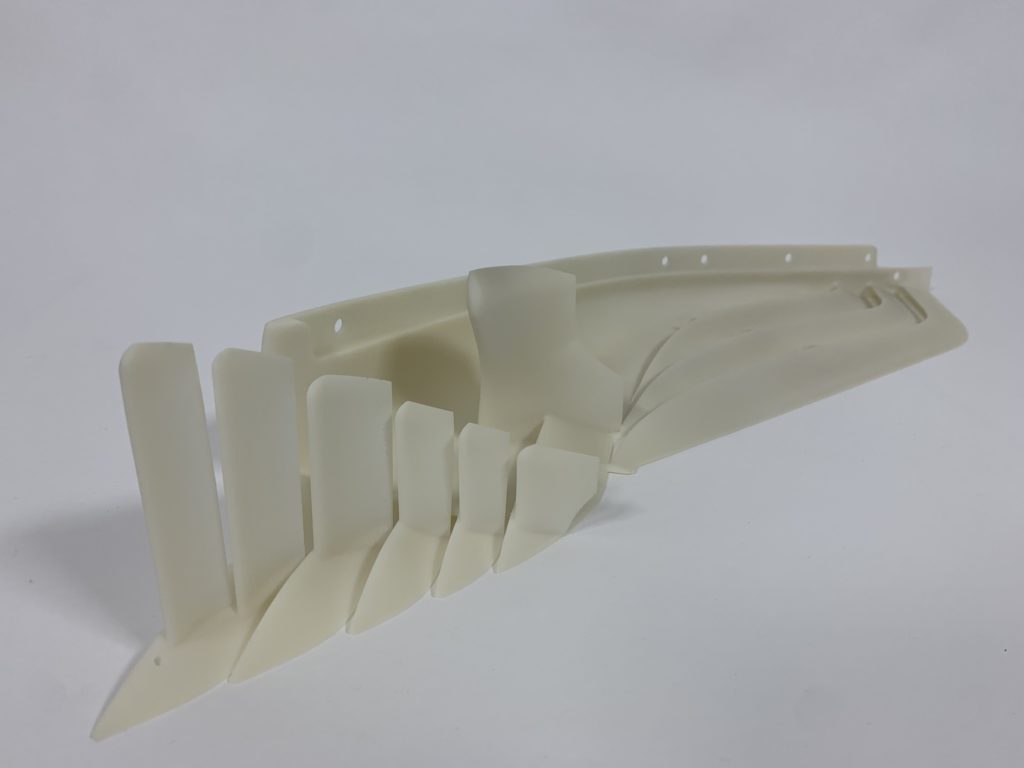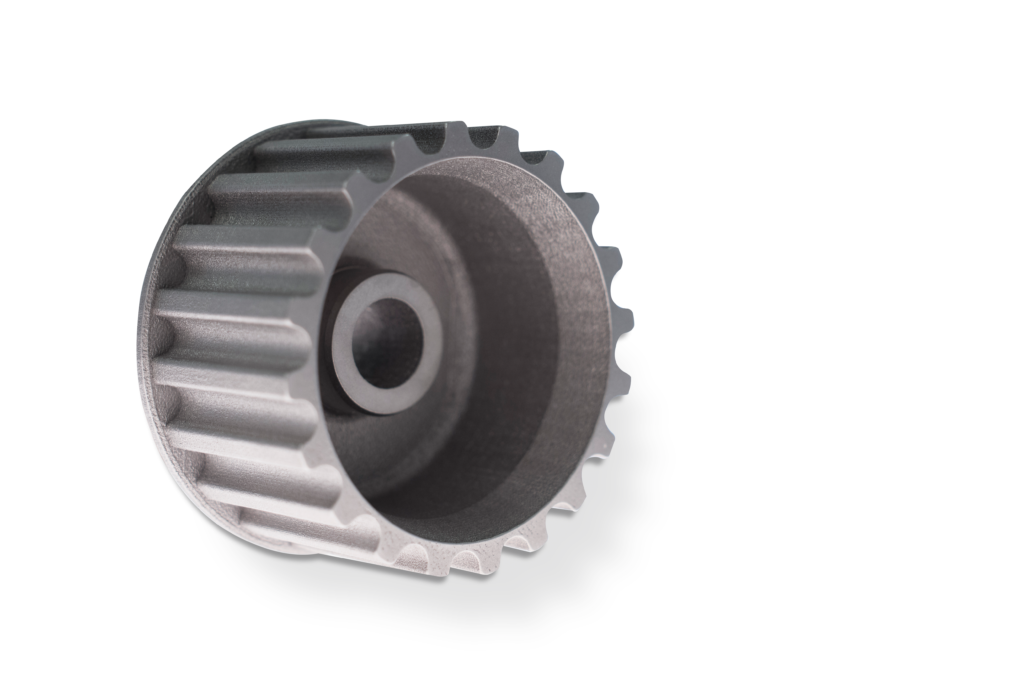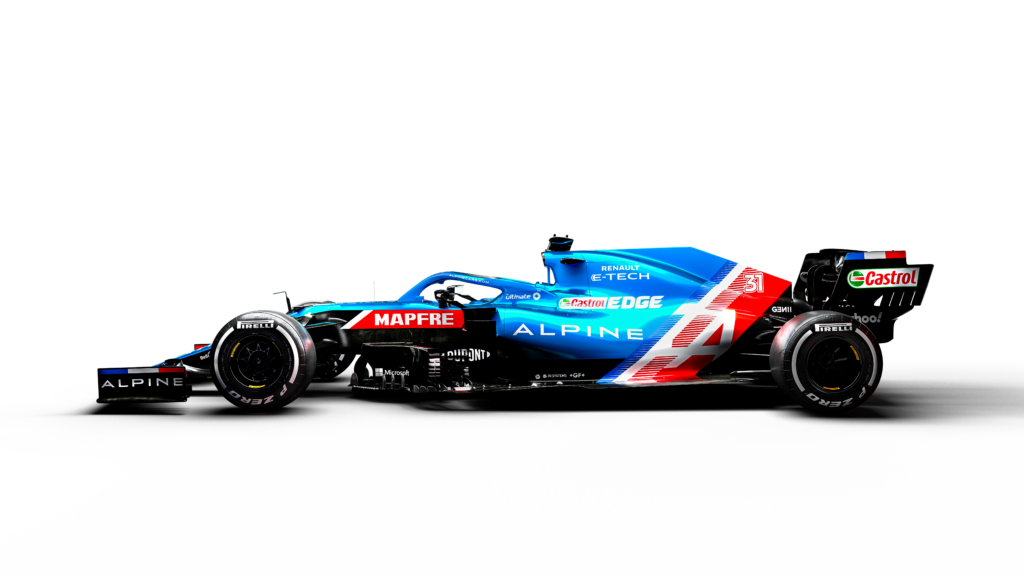Ask anyone to tell you the first thing that comes to mind when you say “motorsports,” and chances are very good you’ll get a response that involves references to “speed.” These cars are a showcase of precision engineering, and race teams continue to invest in their vehicles – before, during, and after the race – testing and tuning to maintain a competitive advantage. While the race team is focused on accelerating on the track, they are also faced with accelerations off the track including rapidly changing regulations in their respective circuits and shortened timeframes between the series and races. These regulations limit the investment each team can make toward innovation, and also place restrictions on the materials and technologies they can use. While these regulations are put in place to equalize the teams, they are also limiting their ability to deliver innovation to the top teams.
Addressing innovation on an entire car, often with very compressed timeframes between races, can be a costly venture. Traditional manufacturing methods necessitate tooling which requires long lead times, and time is a luxury these teams do not have. To overcome these challenges, motorsports teams have pivoted to additive manufacturing (AM) to accelerate their innovation – enabling rapid iteration of part and system design to improve performance and lower cost. AM empowers race teams to address a variety of applications more efficiently and effectively than previously possible.
Accelerate Wind Tunnel Testing
Aerodynamic improvements are one of the best ways to enhance performance, allowing teams to tune and improve the behavior of the vehicle by optimizing downforce, drag, and cooling. A mere 5% decrease in drag can increase horsepower by 25%, and getting to that point can require designing and producing up to 600 parts per week to achieve the desired result. Evaluating the performance and effectiveness of any innovation requires time in a wind tunnel. However, access is often limited, which means teams need to make the most of their allotted time, quickly iterating their designs and applying them to new models. Within hours additive manufacturing enables race team engineers to 3D print multiple iterations of accurate parts from nanocomposites that can help minimize drag and lift, maintain stability, and increase performance. Additionally, additively manufactured prototype components mimic the design and surface features of finished parts to make testing more effective. It is now also possible to easily integrate pressure tappings at the CAD stage and print as a single component. This enables comprehensive data collection for the aerodynamic department while ensuring that the assembly process remains simple and fast.

With the help of additive manufacturing, Sauber Motorsports AG is now able to achieve more productive aerodynamic development cycles with high speed, throughput, and accuracy of test parts to optimize regulated testing time.
Sauber Motorsports AG has built a highly productive in-house factory to support its high-demand wind tunnel operations. This additive manufacturing machine park is among the largest of its kind in Europe and enables Sauber Engineering to maintain its relentless pace of innovation. The team is now able to achieve more productive aerodynamic development cycles with high speed, throughput, and accuracy of test parts to optimize regulated testing time. Sauber Engineering produces an average of 100-150 3D printed part sets daily, of which 80-90% are for wind tunnel testing.
Optimize Weight, Force & Inertia
Race teams must design cars that can perform under extreme conditions such as very high temperatures and a variety of forces including downforce, rotation, and friction. Nowhere in the car is that more obvious than with structural components. When a race team engineer designs for additive manufacturing, he or she can have greater control over the race car strength-to-weight ratio of metal parts. This is because AM provides greater design freedom, enabling parts to be created that aren’t possible with traditional methods. In addition to designing differently, additive manufacturing also allows part count reduction meaning that multi-part assemblies can often be produced as monolithic parts. Building metal structural systems from multiple components increases the number of possible failure points – essentially each weld that needs to occur during a multi-part assembly. Through design for additive manufacturing (DfAM), engineers can create durable, integrated parts that contain fewer components, thus eliminating costly assembly time.
English Racing team in Oregon experienced a problem with its Mitsubishi Evo race car that, once tuned, the oil pressure would immediately rise too high and cause engine failure. English Racing had a theory that producing a new under-pulley gear with a larger diameter would turn slower and thereby lower the oil pressure. However, producing it was a huge challenge. The original pulley was a cast part, which would typically require a mold, tooling to produce a mold, a significant amount of lead time, and a prohibitive amount of money.

English Racing collaborated with Metal Technologies Inc (MTI) to produce a new under-pulley gear with metal 3D printing. They produced a functional prototype in just five hours, that reduced oil pressure and allowed the vehicle to set speed records in its class.
English Racing tried to produce this part for over two years, but the team saw no relief in sight. The company discovered Metal Technologies Inc (MTI) that brought an innovative solution – metal 3D printing. Through this collaboration, they were able to quickly prepare the design data for 3D printing, and produce a working prototype in just five hours. Within three days, that part was installed on the Mitsubishi Evo race car and running on the track. The part worked perfectly, reducing oil pressure to safe levels and allowing the vehicle to set speed records in its class.
Improve Air & Fluid Dynamics
There are many applications for AM under the hood. Air ducts, containers, tubes, protective covers, and couplings often require a high degree of flexibility and/or durability that traditional manufacturing methods can’t produce. Additive manufacturing, on the other hand, can deliver parts with exceptional mechanical properties to enable better air and fluid management. This is due in large part to the materials used to create these parts. Tremendous advancements have been made in 3D printing materials innovation over the last 12-18 months to enable the production of parts from performance plastics. These durable, heat-resistant materials are especially important for under-the-hood applications required by motorsports teams. It’s now possible to create durable parts with consolidated complex geometries, such as 3D printed intake manifolds, to improve internal system cooling, provide better component protection, reduce assembly, and avoid fluid leaks.
Alpine F1 Team has embraced the benefits of AM to respond to the challenges presented from consistently new racing environments. Using both stereolithography and selective laser sintering, the Team can produce complex jigs and fixtures, fluid flow rigs, and on-car components in hours rather than weeks. AM has helped the team achieve lighter-weight parts that increase speed and fuel efficiency as well as accurate and informative flow testing for better engine performance and reduced wear and tear.

Using SLA and SLS, Alpine F1 Team can produce fluid flow rigs in hours rather than weeks helping the team achieve lighter-weight parts that increase speed and fuel efficiency as well as accurate and informative flow testing for better engine performance and reduced wear and tear.
Fueling Innovation for Competitive Advantage
While racing series regulations impose limitations on many aspects of motorsports teams’ innovation, they have not limited engineering expertise and imagination. Elite motorsports teams have embraced additive manufacturing to defy limitations and bring their concepts to life – accelerating innovation and the performance of their cars. Leveraging solutions that include materials, 3D printing technology, and software that are backed by expertise, it’s possible to produce robust, accurate parts that withstand the rigors of the track and enable the development of cars that win championships.
Subscribe to Our Email Newsletter
Stay up-to-date on all the latest news from the 3D printing industry and receive information and offers from third party vendors.
You May Also Like
3D Printing Financials: Fathom Struggles in Financial Quicksand During Critical Transition
Facing a year of key transitions and financial pressures, Fathom (Nasdaq: FTHM) has filed its annual report for 2023 with the U.S. Securities and Exchange Commission (SEC). The document outlines...
Latest Earnings Overview for Australian 3D Printing Firms Titomic and AML3D
Australian 3D printing manufacturing firms Titomic (ASX: TTT) and AML3D (ASX: AL3) reported their financial results for the period from July to December 2023, marking the first half of their...
3D Printing Webinar and Event Roundup: April 7, 2024
Webinars and events in the 3D printing industry are picking back up this week! Sea-Air-Space is coming to Maryland, and SAE International is sponsoring a 3D Systems webinar about 3D...
3D Printing Financials: Unpacking Farsoon and BLT’s 2023 Performance
In the Chinese 3D printing industry, two companies, Farsoon (SHA: 688433) and Bright Laser Technologies, or BLT (SHA: 688333), have recently unveiled their full-year earnings for 2023. Farsoon reported increases...































